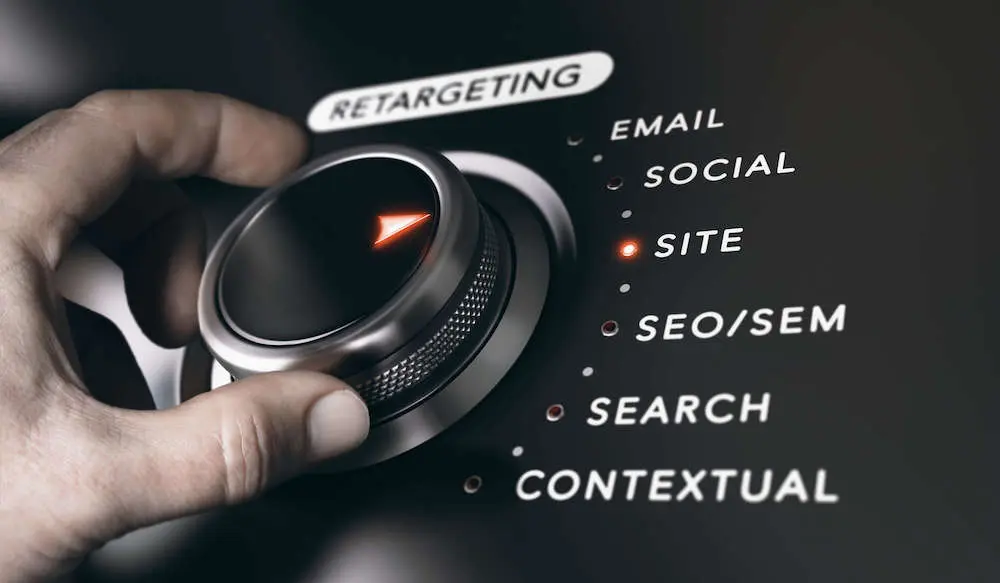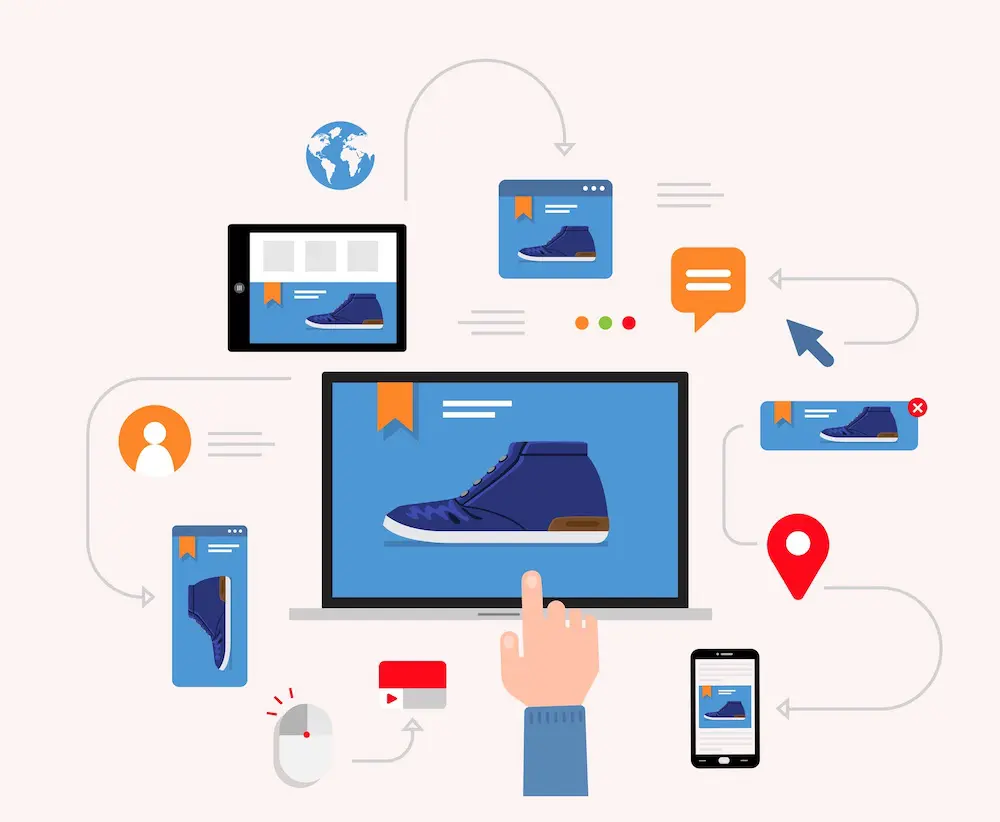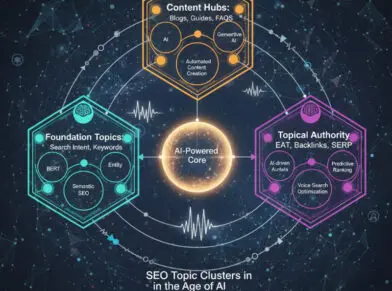What is Remarketing?

Remarketing might seem like a straightforward concept at first. However, as it turns out, it’s often understood and misunderstood in equal measure.
Those who truly understand it are seeing significant bottom-line growth from their remarketing efforts. And that’s because they take the time to carefully fine-tune its highly intricate campaign triggers.
The ones who misinterpret it, however, are struggling to figure out the configurations. Many of them mistakenly assume that remarketing is only a matter of plugging in automated retargeting tools, and then leaving the solutions to chase down cart abandoners on their own.
Much of this confusion comes from Google itself. Even though the platform is a remarketing giant in its own right, it doesn’t explicitly differentiate its remarketing services from retargeting solutions. The terms have been used interchangeably within its tool suite, thereby throwing off even seasoned marketers on where to draw the line between the two strategies.
Thankfully, that ends here. This guide explores all the essentials of remarketing, the best practices you should follow, plus the benefits you should expect. You also get to find out the differences between retargeting and remarketing, as well as the types of services that you should be getting from your remarketing agency.
Why Use Remarketing?
Remarketing is a digital marketing approach that allows brands to reconnect with individuals who have previously engaged with their business app, website, or other digital assets. The engagement medium is usually digital advertising channels – such as display ads, search ads, social media ads, and email marketing.
People here become part of a campaign audience once they’ve connected with a brand and shown interest. They could be first-time visitors who dropped out after exploring various product options, consumers who abandoned their cart while shopping, prospects who failed to complete filling out their forms, repeat customers who might have an interest in product upgrades, etc.
The primary goal of the campaign is to help businesses make a sale that they previously missed out on. If you take a look at your sales analytics, you’ll notice that out of the multitude of leads who regularly stream into your website, your conversion rate is probably in the low single digits.
Remarketing tools are designed to re-engage with those who did not buy, in the hope of closing the deal.
Remarketing campaigns also reach out even to the converted customers to maximize sales opportunities with them. Existing customers tend to convert at a much higher rate, with a remarkable 60% to 70% average conversion rate on subsequent purchases.
Remarketing uses deeply personalized dynamic ads to help you raise those stakes even further in your favor. You get to convert the target audiences so much faster by showing them precisely what they want even when they’re away from your site.
Retargeting vs. Remarketing
Although often used interchangeably, “remarketing” and “retargeting” are not synonymous. They may be closely related all right, but there are several distinct differences that set them apart from each other.
The Differences Between Retargeting and Remarketing

The primary differences between retargeting and remarketing lie in their target audiences, information collection methods, mode of targeting, and contact channels.
Retargeting uses personalized ads to connect with website visitors who left without converting, whereas remarketing is a broad term that covers all the personalized campaigns that target people who’ve interacted with your brand at any level – they could be first-time buyers, repeat customers, qualified leads, or just random prospects.
In essence, therefore, you could say that retargeting is a subcategory of remarketing. It represents only a fraction of the efforts – meaning that not all remarketing campaigns would qualify as retargeting strategies.
Retargeting: A closer look

Retargeting deals with audiences who may not be very familiar with your brand. They’ve been to your website, and now an embedded tracking code – a pixel – has identified them as someone interested in your offerings. The pixel tracks them around the web while keeping tabs on their preferences and interests. All that info is combined and then used to personalize their targeted ads according to personal interests and web behavior.
The resultant retargeting ads are typically distributed through display ad networks such as the Google Display Network and Facebook Audience Network – both of which have an extensive footprint that extends across millions of publisher websites and apps. This is how you get to reach audiences wherever they go on the web.
Most of the individuals that you’ll be engaging with retargeting ads fall within the 96% share of unconverted website visitors. They are part of the bulk majority that are not ready to buy when they check into your website.
Remarketing: A closer look

Remarketing, on the other hand, covers the entire spectrum of marketing efforts targeting all types of people who’ve interacted with your brand. It encompasses not just retargeting ads, but also other forms of targeted engagement strategies across various touch points along the customer journey.
The audiences here tend to be more familiar with the brand, as they’ve probably interacted with it multiple times. They range from serial site visitors, mailing list subscribers, past customers, blog subscribers, returning buyers, inactive leads, etc. Remarketing ads try to push all of them through the sales funnel and ultimately generate conversions.
With well-crafted remarketing services, it shouldn’t take you long to generate results. Repeat customers, for instance, have shown that they not only convert quicker, but also spend more as time goes by. In three years, they’ll be forking out 67% more than they did in their first 6 months.
That said, it’s worth noting that email was the traditional delivery channel for all these marketing messages. But, over time, remarketing expanded to accommodate additional options – with the primary ones now being display ad networks, social media, and on-site messaging. Some businesses are even investing in advanced remarketing services that support omni channel campaigns.
The customer information itself is obtained from all the data that your business has built up over time. You’ll be personalizing all the marketing messages using insights from your embedded website trackers, mailing list contact profiles, sales database, etc.
Best Practices for Remarketing Services
How to Optimize Remarketing Campaigns for Success
To achieve and maintain highly successful remarketing campaigns, you should always apply these best practices;
- Segment your audiences: To enhance ad personalization and relevance, segment your audience according to their behavior, interests, and demographics. This allows you to target each group with custom-tailored ads.
- Set clear goals: Clearly outline your campaign objectives and goals. This could be anything, from enhancing conversion rates and elevating brand visibility to growing your inbound traffic.
- Optimize ad creative: Remember to craft captivating advertisements that not only reflect your brand identity, but also resonate deeply with your intended audience. You can experiment with various ad formats, visuals, and messaging to establish the best balance of ad assets.
- Leverage dynamic remarketing: Employ dynamic remarketing to automatically generate customized advertisements that reflect each recipient’s behavior, interests, location, device, and past interactions.
- Regulate ad frequency: Don’t bombard your audience with excessive ads. You should, instead, avoid ad fatigue by regulating the frequency of ad displays
- Test, measure, and optimize: Keep experimenting with various strategies, ad formats, and targeting alternatives to uncover the most effective approach for your remarketing campaigns. And while you’re at it, you should especially monitor your click-through rates (CTR), conversion rates, and the accompanying return on ad spend (ROAS) KPIs.
Conclusion
Remarketing isn’t just a matter of plugging in automated retargeting tools and then letting them run. Successful remarketing campaigns implement a multi-faceted workflow that tracks visitors’ interactions within your website, segments audiences, and then uses the insights to define personalization triggers for your dynamic remarketing campaigns.
But this is easier said than done, of course. You’ll need to keep building, managing, coordinating, and tracking all those campaign parameters while, at the same time, configuring the corresponding automation sequences.
The good news is, you can save yourself all that headache by turning to professional teams like Globe Runner. We have expert strategists, marketers, designers, and copywriters, all of whom will work together to ensure that your retargeting ads are always aligned with your brand and the interests of the target audience.
So advanced are our remarketing services, in fact, that we’ve been recognized as an official Google Partner. This form of certification comes with exclusive access to Google’s tools and info – assets that could go a long way toward empowering your remarketing campaigns.
Contact us today for a quote. We’re ready to supercharge your conversions with our highly advanced remarketing services.



















